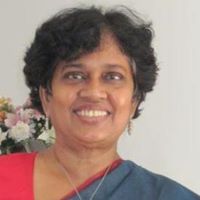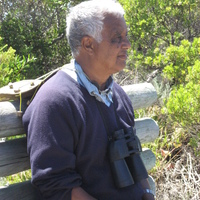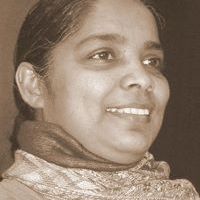Papers by Pranava Michael

The main purpose of this paper was to study the changes (demographic, economic, social and cultur... more The main purpose of this paper was to study the changes (demographic, economic, social and cultural) that have taken place within Sri Lanka in the post 1977era and how these changes have impacted the Sri Lankan consumer. This study also addresses how these changes have shaped consumers’ consumption-behavioural patterns by mainly addressing two social classes i.e. Traditional Middle Class one (TMC 1) and Traditional Middle Class two (TMC 2) in Sri Lanka.
A mixed research methodology was used to obtain information from participants. The participants involved for the study were professionals, senior managers, junior managers and teachers in the public and private sector between ages 30 - 45. A detailed qualitative based approach was used with a basic quantitative approach. The quantitative approach included 200 interviews while the qualitative approach included twenty in-depth interviews and six focus groups.
The habits based on consumption, and attitudes towards friends were largely similar while marginal differences were observed in usage of telecommunication. Leisure, transport and living conditions differed among the two groups mainly due to the high disposable income of TMC 1.
However, the lineage/ancestry was a differentiating factor as participants who came under TMC 1 had an English speaking background and participants from TMC 2 had either a Sinhala or Tamil speaking background. If explained broadly, participants belonging to TMC 1 had communicated in English for the past three generations with family members, relatives, and friends in addition to the place of work.
On the other hand, participants belonging to TMC 2 differed from the former as they had communicated in their Mother Tongue (Sinhala or Tamil) for the past three generations with family members, relatives, and friends in addition to the place of work. Throughout the research it was clearly seen that a core need of TMC 2 was upward social mobility while for TMC 1 it was maintenance of social status. Another notable point was that although in the quantitative phase a criterion was set out to differentiate the two groups based on income, in the qualitative phase it was identified that TMC 1 participants inherently descended from a wealthier background than TMC 2 participants and therefore the two aspects of lineage and income appeared to be entwined.
This study has been done as a continuation to the research done by Liyanage, 2009 on Profiling the Sri Lankan Consumer and The Sri Lankan Post-modern Consumer. This study differs from the previous research by focusing on the aforementioned two middle classes of Sri Lanka in who they are, what they do, what they have and what they value while the previous work empirically examined all classes in combination.
Key Words: Traditional Middle Class 1 (TMC 1), Traditional Middle Class 2 (TMC 2), Social Status, Social Class, Who you are, What you do, What you have, What you value, Westernization and Language.









Uploads
Papers by Pranava Michael
A mixed research methodology was used to obtain information from participants. The participants involved for the study were professionals, senior managers, junior managers and teachers in the public and private sector between ages 30 - 45. A detailed qualitative based approach was used with a basic quantitative approach. The quantitative approach included 200 interviews while the qualitative approach included twenty in-depth interviews and six focus groups.
The habits based on consumption, and attitudes towards friends were largely similar while marginal differences were observed in usage of telecommunication. Leisure, transport and living conditions differed among the two groups mainly due to the high disposable income of TMC 1.
However, the lineage/ancestry was a differentiating factor as participants who came under TMC 1 had an English speaking background and participants from TMC 2 had either a Sinhala or Tamil speaking background. If explained broadly, participants belonging to TMC 1 had communicated in English for the past three generations with family members, relatives, and friends in addition to the place of work.
On the other hand, participants belonging to TMC 2 differed from the former as they had communicated in their Mother Tongue (Sinhala or Tamil) for the past three generations with family members, relatives, and friends in addition to the place of work. Throughout the research it was clearly seen that a core need of TMC 2 was upward social mobility while for TMC 1 it was maintenance of social status. Another notable point was that although in the quantitative phase a criterion was set out to differentiate the two groups based on income, in the qualitative phase it was identified that TMC 1 participants inherently descended from a wealthier background than TMC 2 participants and therefore the two aspects of lineage and income appeared to be entwined.
This study has been done as a continuation to the research done by Liyanage, 2009 on Profiling the Sri Lankan Consumer and The Sri Lankan Post-modern Consumer. This study differs from the previous research by focusing on the aforementioned two middle classes of Sri Lanka in who they are, what they do, what they have and what they value while the previous work empirically examined all classes in combination.
Key Words: Traditional Middle Class 1 (TMC 1), Traditional Middle Class 2 (TMC 2), Social Status, Social Class, Who you are, What you do, What you have, What you value, Westernization and Language.
A mixed research methodology was used to obtain information from participants. The participants involved for the study were professionals, senior managers, junior managers and teachers in the public and private sector between ages 30 - 45. A detailed qualitative based approach was used with a basic quantitative approach. The quantitative approach included 200 interviews while the qualitative approach included twenty in-depth interviews and six focus groups.
The habits based on consumption, and attitudes towards friends were largely similar while marginal differences were observed in usage of telecommunication. Leisure, transport and living conditions differed among the two groups mainly due to the high disposable income of TMC 1.
However, the lineage/ancestry was a differentiating factor as participants who came under TMC 1 had an English speaking background and participants from TMC 2 had either a Sinhala or Tamil speaking background. If explained broadly, participants belonging to TMC 1 had communicated in English for the past three generations with family members, relatives, and friends in addition to the place of work.
On the other hand, participants belonging to TMC 2 differed from the former as they had communicated in their Mother Tongue (Sinhala or Tamil) for the past three generations with family members, relatives, and friends in addition to the place of work. Throughout the research it was clearly seen that a core need of TMC 2 was upward social mobility while for TMC 1 it was maintenance of social status. Another notable point was that although in the quantitative phase a criterion was set out to differentiate the two groups based on income, in the qualitative phase it was identified that TMC 1 participants inherently descended from a wealthier background than TMC 2 participants and therefore the two aspects of lineage and income appeared to be entwined.
This study has been done as a continuation to the research done by Liyanage, 2009 on Profiling the Sri Lankan Consumer and The Sri Lankan Post-modern Consumer. This study differs from the previous research by focusing on the aforementioned two middle classes of Sri Lanka in who they are, what they do, what they have and what they value while the previous work empirically examined all classes in combination.
Key Words: Traditional Middle Class 1 (TMC 1), Traditional Middle Class 2 (TMC 2), Social Status, Social Class, Who you are, What you do, What you have, What you value, Westernization and Language.